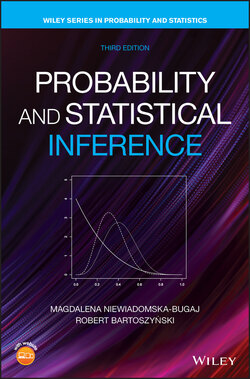Читать книгу Probability and Statistical Inference - Robert Bartoszynski - Страница 59
2.5 Classical Probability
ОглавлениеFor the so‐called classical or logical interpretation of probability, we will assume that the sample space contains a finite number of outcomes and all of these outcomes are equally probable.
Obviously, in this case, each of the outcomes has the same probability and for every event
(2.7)
In many real situations, the outcomes in the sample space reveal a certain symmetry, derived from physical laws, from logical considerations, or simply from the sampling scheme used. In such cases, one can often assume that the outcomes are equiprobable and use (2.7) as a rule for computing probabilities. Obviously, the function in (2.7) satisfies the axioms of probability.
To use some very simple examples, in tossing a regular die, each face has the same probability . Then the probability of the event is , since there are three odd outcomes among the possible six.
The case above is rather trivial, but considerations of symmetry can sometimes lead to unexpectedly simple solutions of various problems.
